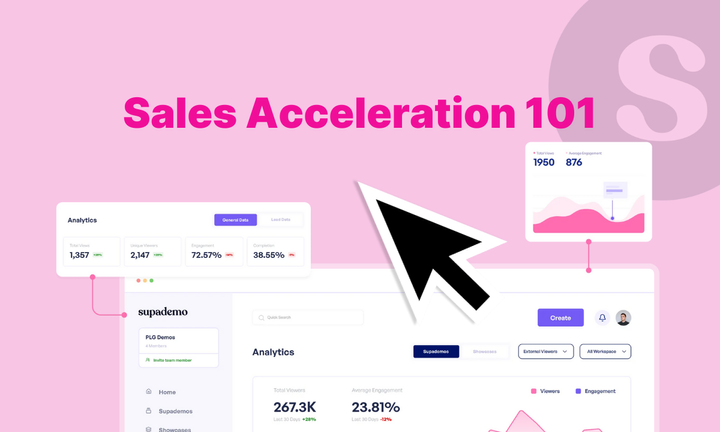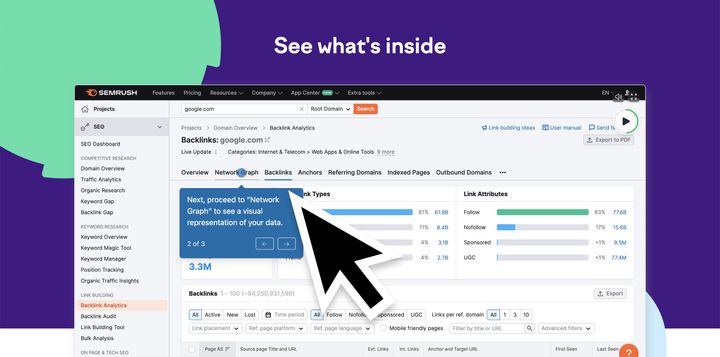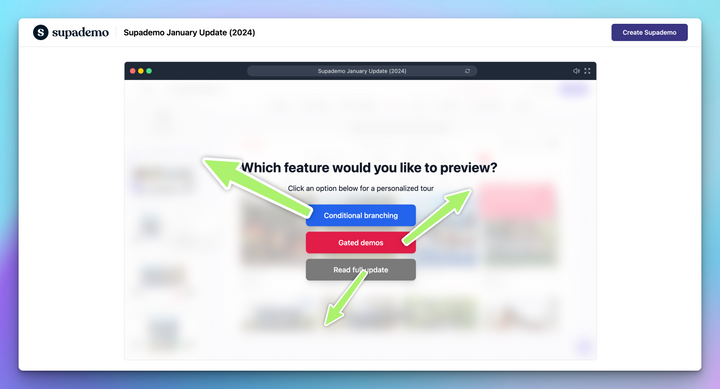The push for faster sales is intensifying. Buyers now spend more of their journey exploring solutions independently, leaving your sales team with less time to impress and more pressure to perform.
And the teams that adapt are seeing results. As per Salesforce's State of Sales Report, sales teams using AI are 1.3x more likely to see revenue growth, and 83% report productivity gains.
So, how can your team achieve the same? This guide lays out the blueprint: real-world success stories, proven strategies, and expert insights to help you shorten sales cycles, close more deals, and keep your team moving faster, without losing focus on buyer needs. Let's get into it.
What is sales acceleration?
Sales acceleration is the practice of streamlining your sales process to help teams close deals faster and drive more revenue. It combines tools, data, and smarter workflows to eliminate bottlenecks and free up reps for high-impact conversations.
Think of it as reducing friction in the buyer’s journey, automating repetitive tasks, personalizing outreach, and giving reps the insights they need to move prospects through the pipeline with confidence.
Why sales acceleration matters?
As B2B buyers increasingly demand self-service options, sales teams face the challenge of delivering speed without sacrificing deal quality.
According to Gartner, 61% of buyers prefer a rep-free experience, yet those engaging both digital tools and sales reps are 1.8x more likely to close high-quality deals.
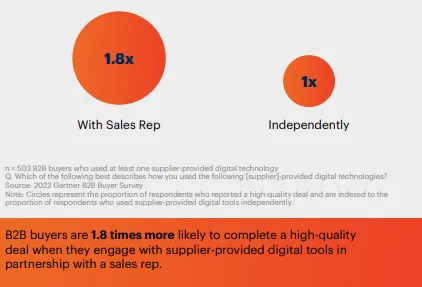
This is where sales acceleration strategies come in. It helps streamline workflows, automate repetitive tasks, and enables reps to focus on building relationships at critical moments. McKinsey reports that 30% of sales-related activities are automatable today, freeing up significant time for customer-facing work.
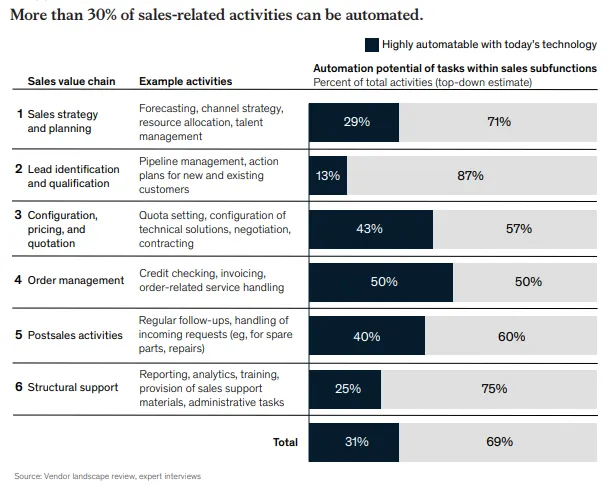
For example, an advanced-industries company reduced proposal creation time from three weeks to two hours by automating manual steps. This shift allowed reps to respond faster, improve customer satisfaction, and directly contributed to a 5% revenue increase.
What are the key components of an effective sales acceleration strategy?
To shorten sales cycles and close more deals, businesses need strategies that combine technology, buyer insight, and process optimization. Here are the four key components that make an effective sales acceleration strategy work in 2025 and beyond:
1. Understanding your audience
Sales acceleration thrives when you truly understand your buyers and wield that insight strategically. A McKinsey study shows that fast-growing companies drive 40% more revenue from personalization than their peers.
That means:
- You spend less on wasted outreach.
- Your messaging aligns with buyer pain points from the start.
Here’s a quick breakdown:
| Benefit | Outcome |
|---|---|
| Precise targeting | Fewer dead-end conversations |
| Tailored communication | Higher qualification rates |
| Aligned sales + marketing | Consistent buyer experience across touchpoints |
For example, PinnacleQuote experienced this firsthand:
“We used to require a live agent to walk people through the application process. Then we built a self-serve risk assessment that pre-qualified them. Turns out, folks prefer to fill it out privately. We got more completions and freed up our team to focus on closers, not shoppers.”
By focusing efforts on high-intent leads and tailoring outreach, teams free up time to engage decisively, speeding up the entire sales cycle.
2. Streamlining your sales process
Bottlenecks like formal discovery calls and repetitive handoffs can stall deals when prospects are most engaged. That’s why leading teams are embedding discovery directly into their product demos, cutting out unnecessary steps and keeping momentum high.
At Ketch, the marketing team reimagined their approach:
“We stopped doing formal discovery calls as a separate meeting. Instead, we built discovery into the first demo using a guided conversation format. It shaved many days off the cycle and created more momentum early on.”
This shift saved time and gave their reps insights during live interactions, enabling them to qualify leads faster and focus on high-intent prospects.
3. Create self-paced materials (like interactive demos)
Modern buyers want to explore products on their own terms without waiting for a scheduled call or sifting through lengthy documentation. Self-paced materials give them the freedom to learn, evaluate, and even pre-qualify themselves before speaking to your team.
These can include:
- Interactive product demos for hands-on exploration.
- Detailed knowledge bases or help docs.
- Product walkthrough videos embedded on your website.
- ROI calculators or configurators tailored to buyer needs.
At Sigma Tax Pro, this shift paid off significantly:
“Interactive demos are how you personalize the experience. Our proposal acceptance rate went up 20% with interactive demos. Buyers want to see that your product works in their context, and not just as a general application. Interactive demos are how you personalize the experience.”
Here's what a self-paced interactive demo looks like:
Companies using interactive demo videos see a 36% increase in MQLs converting to SQLs, as prospects engage with self-paced experiences that replace static assets and drive qualified opportunities effortlessly.
Deal velocity accelerates by 33% when highly-engaged prospects move through faster sales cycles, while hyper-personalized sales collaterals with intent tracking reduce customer acquisition costs by 28% - captivating prospects for maximized impact at every touchpoint.
4. Automate and personalize as much as possible
Manual processes and generic outreach don’t cut it anymore. Automation removes repetitive tasks, while personalization ensures every buyer interaction feels tailored and relevant. Together, they supercharge your sales velocity.
At PinnacleQuote, automation turned out to be a game changer:
“We cut our response time from 8 hours to under 30 minutes using automated workflows and real-time quoting tools. That one move alone increased our contact-to-close rate by 39%,” says Danny Ray, Founder.
This shift freed up their sales team to focus on high-value conversations while prospects received timely, customized responses.
Here’s how automation + personalization impacts your process:
| Approach | Impact |
|---|---|
| Automated follow-ups | No leads slipping through the cracks |
| Dynamic email personalization | Higher open and engagement rates |
| Real-time quoting tools | Faster deal progression |
By aligning tools like CRM, email automation, and product demos, teams create seamless, personalized journeys that keep buyers moving forward.
Implementing your sales acceleration strategy
Sales acceleration promises speed and efficiency. But without a clear starting point, it can turn into chaos instead of results. Here’s how to lay the groundwork:
Step 1: Assessment and planning
Start by mapping your existing sales process to understand where momentum stalls. Which stages have the highest drop-offs? Where do reps spend the most time? Companies that build regular process reviews into their workflow see a 33% higher chance of outperforming their peers in revenue growth, according to McKinsey.
This assessment also means aligning your sales, marketing, and operations teams around shared goals. Review performance metrics like lead response times, deal conversion rates, and customer acquisition costs.
A thorough assessment sets the stage for prioritizing high-impact fixes and creating a roadmap that accelerates results without overwhelming your team.
Step 2: Tech stack
Your sales tech stack is the engine that powers sales acceleration. A well-designed stack removes friction, automates low-value tasks, and gives reps the insights they need to close deals faster.
But it’s not about piling on tools. The key is alignment, every component should integrate seamlessly to avoid data silos and context switching.
At Ketch, the Head of Marketing explains their evaluation criteria:
“We look at three things: does it make the rep’s job easier, does it create a better experience for the buyer, and can we prove it changes behavior within 30 days? If it doesn’t check at least two of those boxes, we don’t roll it out.”
So, what does a high-performing sales acceleration stack look like?
| Tool Category | Tool & Key Features |
|---|---|
| CRM Systems |
HubSpot – Easy pipeline tracking, email notifications Salesforce – Powerful customization and AI insights |
| Sales Engagement |
Outreach – Automates multichannel sequences Salesloft – Provides coaching and cadence analytics |
| Interactive Demos |
Supademo – Self-paced hands-on demos with AI capabilities Walnut – Customized demo experiences for each prospect |
| AI Analytics |
Gong – Analyzes call behavior, flags risks Clari – Forecasts pipeline health with AI insights |
Step 3: Content creation
Content is the fuel that drives sales acceleration. Every asset should be designed to educate and qualify prospects, even if it is AI-generated.
Leveraging AI for sales and content marketing requires a combination of subject expertise, frameworks, and large language models. Instead of relying solely on AI, use it to enhance your expertise and create better content. #AI #Sales #ContentMarketing pic.twitter.com/tD9uWgASmy
— Shane Gibson 🇨🇦 Keynote Speaker on AI for Sales (@shanegibson) July 7, 2025
Here’s how different content types can accelerate your funnel:
Interactive product tours
Interactive demos allow buyers to explore your product hands-on, at their own pace. Instead of asking “Can it do X?” they arrive to calls ready to discuss how your product fits their workflow. Tools like Supademo make it easy to create and share self-guided tours, saving reps hours on repetitive walkthroughs.
👉 Learn more about how sales teams are improving efficiency with interactive demos in the State of Interactive Demos 2026 report.
Here's how an interactive product tour looks like:
Pre-recorded use cases
Short, tailored videos that address specific industries or roles give prospects immediate context after signup. As the CEO of Brizy.io shares:
“We started pre-recording short use-case videos tailored to specific industries like ‘Brizy for agencies,’ and included them right after a lead signs up. That tiny automation gave leads context instantly and made follow-up calls 10x more effective.”
Case studies
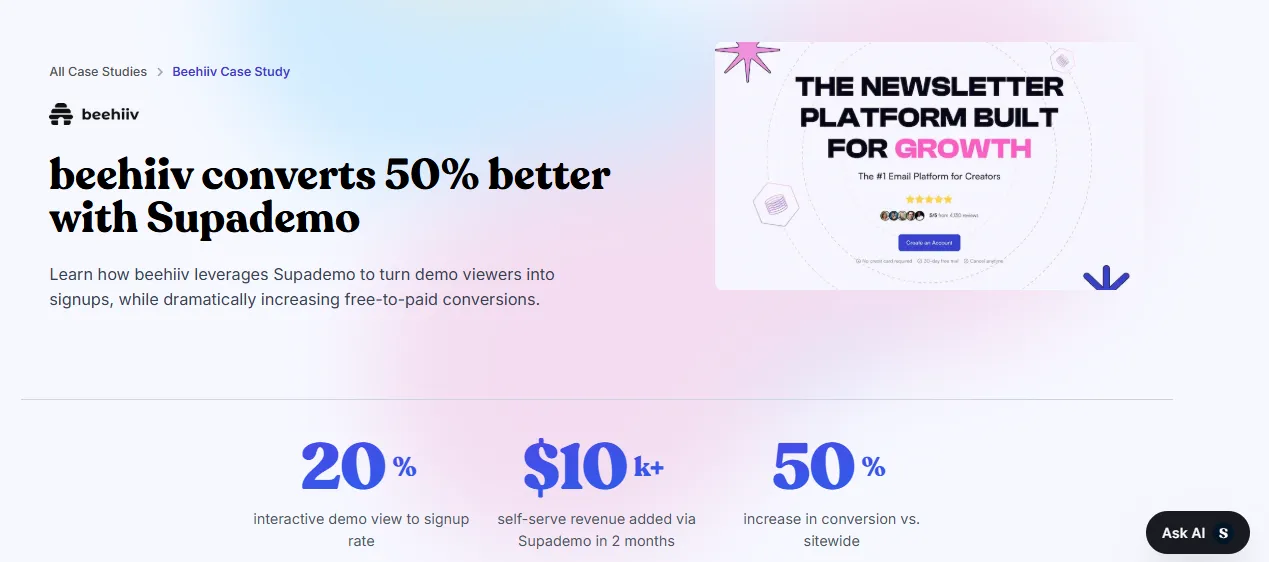
Real-world success stories resonate with buyers because they demonstrate how your product solves specific challenges. A strong case study uses numbers, like “cut onboarding time by 40%” or “boosted conversion rates by 25%” to make the value concrete.
Sharing these during follow-ups or embedding them in your proposals helps prospects envision success and builds trust at critical stages.
Product sheets
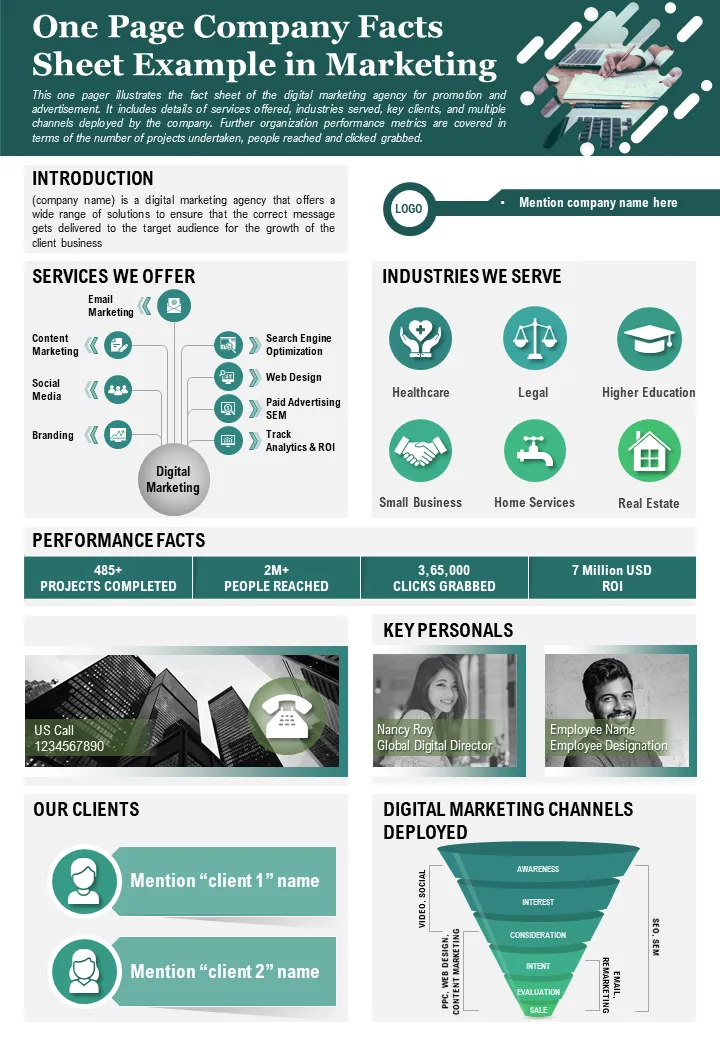
Concise, one-page overviews give buyers a snapshot of what your product does, who it’s for, and how it fits their needs. When designed well, product sheets act as internal sharing tools for champions who need to persuade other stakeholders.
Including pricing and clear benefits keeps the momentum going and eliminates unnecessary back-and-forth.
Measuring success
The true test of any sales acceleration strategy lies in the numbers. To measure impact, focus on metrics that go beyond activity volume and directly reflect pipeline health. Start with lead conversion rates, are more prospects moving seamlessly from qualification to closed-won?
Next, watch your average sales cycle length. Even a modest reduction can create significant compounding revenue gains over time. Tracking customer acquisition cost (CAC) is equally important, ensuring that faster processes don’t come at the expense of efficiency.
Spare Labs saved over 50 hours per month across its pre-sales team and accelerated millions in deal value by using self-serve interactive demos to pre-qualify leads and reduce manual work.
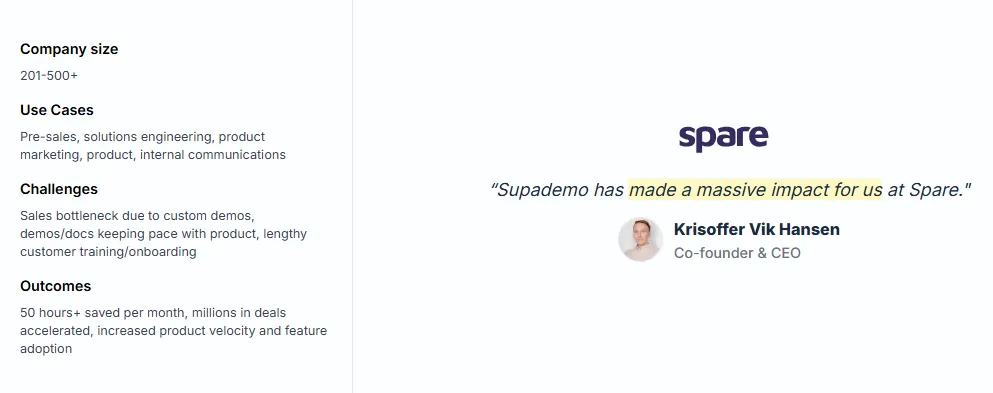
By monitoring these KPIs regularly, teams can fine-tune strategies, identify bottlenecks early, and scale what works with confidence.
Real-world success stories
RareCircles, a platform helping brands build thriving communities, faced a growing challenge: their customer success team was bogged down with repetitive support tickets. To address this, they turned to Supademo’s interactive demo platform.
By embedding interactive product tours directly into their support documentation, RareCircles empowered users to resolve common issues independently. This self-service approach improved customer satisfaction and cut down the number of support tickets by a significant margin.

Customer success managers saved dozens of hours each month, and the team was able to redirect efforts toward high-value customer relationships instead of troubleshooting.
Accelerate your sales journey with Supademo
The companies winning in today’s market aren’t just selling faster, they’re selling smarter. Every hour freed from admin tasks or clunky handoffs is an hour your team can spend closing deals and building customer relationships.
Ready to accelerate your sales process? Start by implementing one strategy from this guide. Then try Supademo for free to turn static demos and sales materials into interactive experiences that engage prospects and move them through the pipeline faster.


